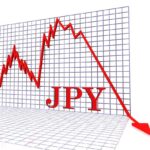Gold Prices Slip Below $3,300 Amid Receding Safe-Haven Demand, Firmer Dollar, and Trade Optimism.
Gold (XAUUSD) faced renewed selling pressure on Friday, retreating below the key $3,300 psychological level as global market sentiment shifted in favor of riskier assets. The safe-haven metal erased a significant portion of Thursday’s gains in the early European session, driven by a combination of improving US-China trade relations and moderate strength in the US Dollar (USD).
As equity markets picked up on optimism surrounding potential trade de-escalation between Washington and Beijing, investors rotated out of defensive assets like gold and back into risk-sensitive instruments, such as stocks and industrial commodities. Despite lingering geopolitical threats and dovish Federal Reserve signals, the yellow metal struggled to find buyers, pointing to a cautious and complex macro backdrop.
Signs of US-China Trade Progress Trigger Risk-On Sentiment
One of the key catalysts driving the decline in gold prices was the growing optimism around a possible thaw in the long-standing trade tensions between the United States and China. On Thursday, US President Donald Trump announced that discussions between the two countries had resumed and that progress was being made toward a deal.
In a further sign of goodwill, reports emerged that China may suspend its punitive 125% tariff on select US imports. If confirmed, such a move would signal a meaningful step toward reducing trade-related uncertainty that has weighed on global markets for years. As a result, investor appetite for risk increased, steering flows away from gold and toward equities and other growth-linked assets.
Upbeat US Data Lends Modest Support to the Dollar
Another factor adding pressure on gold was the modest uptick in the US Dollar, underpinned by stronger-than-expected macroeconomic data. Thursday’s releases showed continued resilience in the US economy, starting with Initial Jobless Claims that climbed slightly to 222,000 for the week ending April 19. Despite the increase, the figures remain historically low, signaling a still-tight labor market.
More notably, the US Census Bureau reported that Durable Goods Orders surged 9.2% in March, beating consensus expectations of a 2% increase by a wide margin. This marked the third consecutive month of gains, with transportation equipment alone rising a staggering 27%. The data reinforced confidence in the strength of the manufacturing and investment cycles in the US, offering support to the greenback.
While the Dollar’s upside somewhat capped by dovish remarks from Fed officials, it still retain enough traction to act as a short-term headwind for gold, which tends to move inversely with the USD.
Fed Dovishness Keeps Gold Bulls Cautiously Optimistic
Despite Friday’s bearish price action, gold remains supported by a generally dovish tilt from the Federal Reserve. Multiple Fed officials have recently acknowledged the potential need to cut interest rates should macroeconomic conditions deteriorate or if downside risks from tariffs and slowing global growth intensify.
Cleveland Fed President Beth Hammack hinted that a rate cut could come as early as June, contingent upon receiving “clear and convincing” evidence of economic weakness. Meanwhile, Fed Governor Christopher Waller stated he would support easing measures if tariffs adversely impacted employment. Markets are now pricing in the likelihood of at least three rate cuts by the end of 2025, which could serve as a longer-term bullish factor for gold.
However, in the near term, the lack of immediate policy action, combined with firm economic data, may deter aggressive buying in the gold market.
Geopolitical Tensions Linger, But Impact Muted For Now
In normal circumstances, the escalation of geopolitical conflicts—particularly involving nuclear-capable nations—would be expected to trigger a flight to safety. However, despite a deadly Russian missile strike on Kyiv that claimed at least twelve lives, market reaction was relatively muted on Friday.
This points to a short-term prioritization of trade optimism and economic data over war developments. Nevertheless, the broader geopolitical environment remains fraught with uncertainty. The ongoing Russia-Ukraine conflict, tensions in the Middle East, and potential flashpoints in East Asia all contribute to an undercurrent of risk that could reignite gold demand at any time.
Technical Analysis: Key Levels to Watch for Gold
From a technical standpoint, the recent drop below $3,300 marks a critical breakdown in short-term support for gold prices. The failure to hold gains from Thursday’s rally raises questions about bullish momentum, especially given the rejection from the all-time high near $3,500 earlier this week.
If selling continues, the next area of support lies near $3,250, followed by a stronger demand zone around $3,200. Below this, the 100-day EMA, currently hovering near $3,150, could provide a cushion for further downside moves.
On the upside, any recovery would need to convincingly reclaim $3,325-$3,350 to reignite bullish interest, with the $3,400 level serving as the next key resistance zone.
Outlook: Balanced But Cautious
The outlook for gold remains balanced in the near term. While the metal faces immediate headwinds from stronger US data and improving global risk sentiment, underlying support remains in place from dovish Fed expectations and unresolved geopolitical concerns.
Traders are advised to remain cautious and await more confirmation of either a reversal or continuation of the current downtrend. A decisive break below $3,250 could trigger further liquidation, while a bounce back above $3,350 may renew bullish momentum.
The next major catalyst to watch is the release of the revised Michigan Consumer Sentiment Index, which could influence both the USD and broader market sentiment. In parallel, developments in US-China trade negotiations and geopolitical hotspots should also be closely monitor.
[faq-schema id=”39451″]









